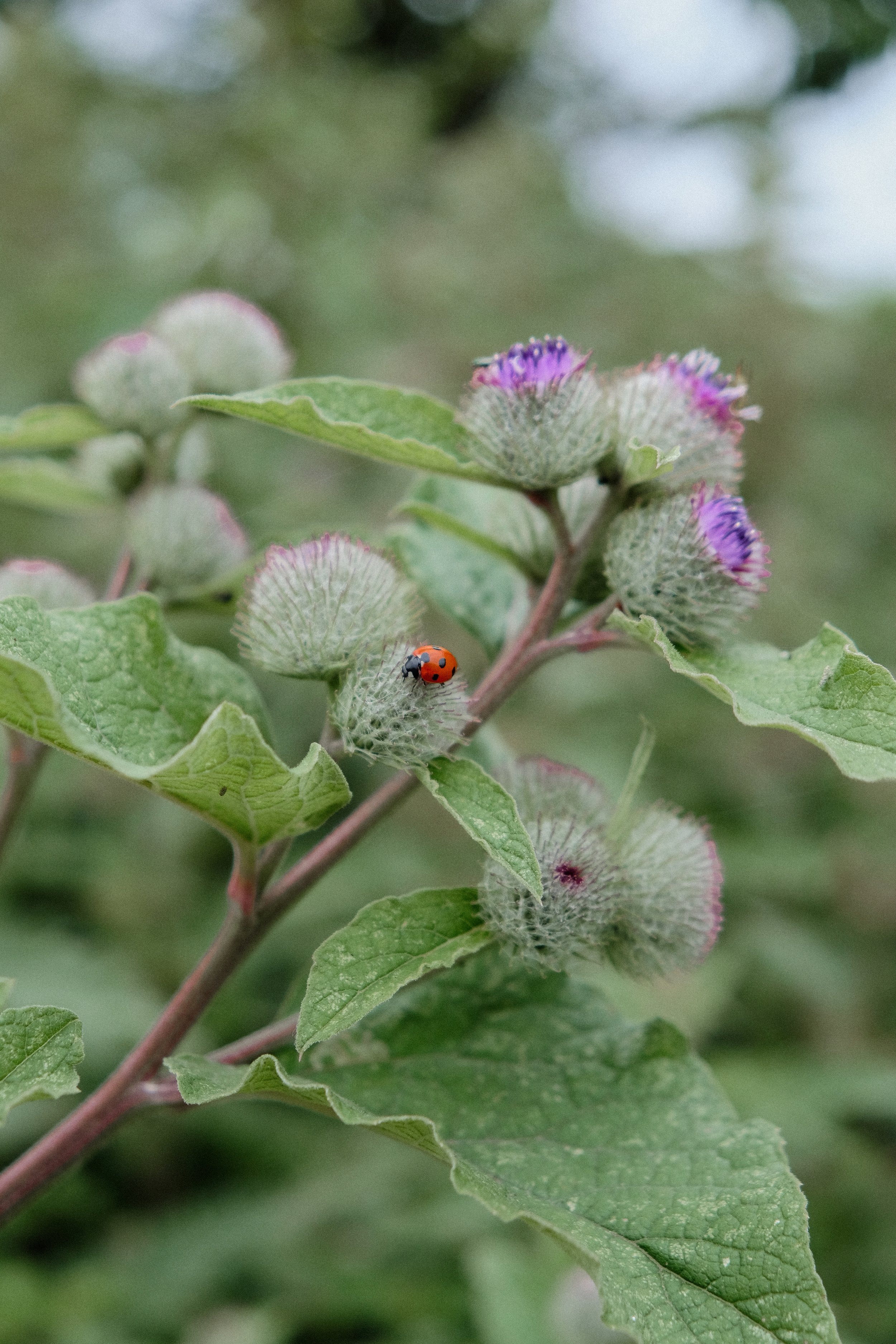Part II: A Week in July in Norfolk
On our third day in Norfolk we drove to the coast. Our first port of call was Blakeney Point, a place we had enjoyed a magical sunset walk at back in January. Ironically, the visit to Blakeney in January featured far better weather than what we got in July. Nevertheless, the landscape is breathtaking enough to look good in rain or shine.
We did a short walk along the wetlands but could still see Cley-next-the-Sea’s windmill in the distance. We saw grazing sheep, watched a little egret fly overheard, heard reed warblers warbling and saw many ladybirds enjoying the wild thistles.
After our wetland walk, we enjoyed the quaint little streets of the village. In January we had loved the charming houses, named things like ‘Curlews Corner’, ‘The Fisherman’s House’ and ‘Waders Nook’, but everything was pretty shut. In July, however, it is full of life. The shops are open and homes are inhabited by holidaymakers.
We were besotted with the chocolate box style streets where hollyhocks grow from every crevice and honesty boxes for hand-picked samphire are dotted around. The flint façades, pastel painted properties and backstreet mewses makes Blakeney feel like it is from another century.
After browsing the independent art shops (and picking up an original etching), we enjoyed a coffee at the Two Magpies Bakery that is situated right on the quay.
We then headed to Cromer because we had an afternoon tea booking at The Grove, a Georgian house that is now a hotel set within landscaped gardens. It was absolutely splendid. We had to sit outside because we had a dog. Despite the unrelenting rain, the mild temperature and the expansive outdoor umbrellas ensured we got neither wet, nor felt cold. It was actually quite atmospheric enjoying tea, cake and finger sandwiches in traditional British summertime weather. We enjoyed sandwiches with fillings like ham and mustard, cheese and chilli chutney, salmon and lemon cream cheese and turkey and cranberry. Vanilla sponge topped with fresh strawberries, biscoff profiteroles and chocolate brownies were enjoyed with copious cups of tea. Fruit scones with raspberry jam and clotted cream were the pièce de resistance. We were even treated to a flowering jasmine tea to enjoy the last sweet treats of the spread. If you are in Cromer or North Norfolk we really would recommend here for afternoon tea.
The sunshine yellow of heleniums, the pretty purple of salvia, the blue of cornflowers and the cerise pink of poppies, provided a much needed pop of colour against the bleak sky.
On our way back towards Sandringham we passed through Cley-next-the-Sea and, despite the rain, enjoyed its quintessential British quaintness. The traditional delicatessen selling glossy blackberries, juicy red strawberries and fresh vegetables in brilliant bright colours was a pretty picture amidst the grey drizzle. The smokehouse, with its mint-coloured trim, was selling kippers, mackerel and other smoked goods.
Our final stop of the day was Walsingham, a pilgrimage place. In 1061, a widow called Richeldis had a vision of the Virgin Mary. Mary took Richeldis, in spirit, to Nazareth to show her the place where the Angel Gabriel had appeared to her. She was told to take note of the measurements of the Holy House and build a copy of it in Walsingham. Richeldis chose the spot for this copy to be near two wells. The carpenters, unable to build it, gave up. Richeldis spent all night in prayer, seeking a solution. The next morning a miracle was discovered. The chapel was found fully completed. The Walsingham legend concludes that Mary had removed the Holy House to the place she herself had chosen. Today, it is visited by thousands of pilgrims every year. It was a really beautiful shrine. Even if you are not religious, it is a peaceful and interesting place to visit.
On our last day the weather was slightly unpredictable and high winds were expected by late-afternoon. However, we made the most of the sunny morning and headed to Bircham Windmill for tea and cake. The windmill was built in 1846 and today remains a working mill. The bakery and tea rooms are just delightful. Whilst you have to pay a small fee to visit the mill, the tea rooms are open for everybody. They’re dog friendly too. We had a homemade jam doughnut, iced bun with sprinkles and a slice of chocolate cake, whilst watching the resident donkey, goat and shire horse mill around in their shared pen. There was also a stew (the brilliant collective noun) of oystercatchers and we enjoyed watching their bright pumpkin appendages bob around.
We spent the rest of our final day enjoying the peace and quiet of the campsite, whilst also battening down the hatches for the forecasted 40 mph winds. North Norfolk is a really special place and one we hope to continue returning to in all seasons.
If you missed Part I of the blog, you can catch up here.
































